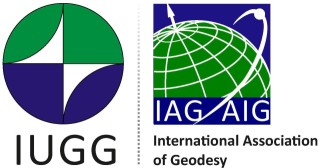Interferometry with matter waves enables precise measurements of rotations, accelerations, and their differences [1-5]. This can be exploited in fundamental sciences [2,3], but also for gravimetry [4], and gravity gradiometry [2,5].
The Quantum Sensors group at the Institut für Quantenoptik in Hannover pursues several, complimentary approaches. A large scale device is designed to investigate the gain in precision for gravimetry, gradiometry, and fundamental tests on large baselines [6]. For field applications, a compact and transportable device is developed. It features an atom chip source which provides a high flux [7] of collimated [8] atoms. This is expected to mitigate dominant systematic uncertainties [9]. The atom chip technology and miniaturization benefits from microgravity experiments in the drop tower in Bremen and sounding rocket experiments [8,9] which act as pathfinders for space borne operation [10].
This contribution will introduce atom interferometry and our various activities in this field.
The presented work is supported by the CRC 1227 DQmat within the project B07, the CRC 1128 geo-Q within the project A02, the QUEST-LFS, the German Space Agency (DLR) with funds provided by the Federal Ministry of Economic Affairs and Energy (BMWi) due to an enactment of the German Bundestag under Grant No. DLR 50WM1331-1137, 50WM1641, and "Niedersächsisches Vorab" through the "Quantum and Nano- Metrology (QUANOMET)" initiative within the project QT3.
[1] P. Berg et al., Phys. Rev. Lett. 114, 063002 (2015); I. Dutta et al., Phys. Rev. Lett. 116, 183003 (2016).
[2] J. B. Fixler et al., Science 315, 74 (2007); G. Rosi et al., Nature 510, 518 (2014).
[3] D. Schlippert et al., Phys. Rev. Lett. 112, 203002, 2014.
[4] A. Peters et al., Nature 400, 849 (1999); A. Louchet-Chauvet et al., New J. Phys. 13, 065026 (2011); C. Freier et al., J. of Phys.: Conf. Series 723, 012050 (2016).
[5] J. M. McGuirk et al., Phys. Rev. A 65, 033608 (2002); P. Asenbaum et al., Phys. Rev. Lett. 118, 183602 (2017).
[6] J. Hartwig et al., New J. Phys. 17, 035011 (2015).
[7] J. Rudolph et al., New J. Phys. 17, 065001 (2015).
[8] H. Müntinga et al., Phys. Rev. Lett. 110, 093602 (2013).
[9] H. Ahlers et al., Phys. Rev. Lett. 116, 173601 (2016); S. Abend et al., Phys. Rev. Lett. 117, 203003 (2016).
[10] O. Carraz et al., Microgravity Sci. Technol. 26, 139 (2014); D. Aguilera et al., Class. Quantum Grav. 31, 115010 (2014).

 PDF version
PDF version
